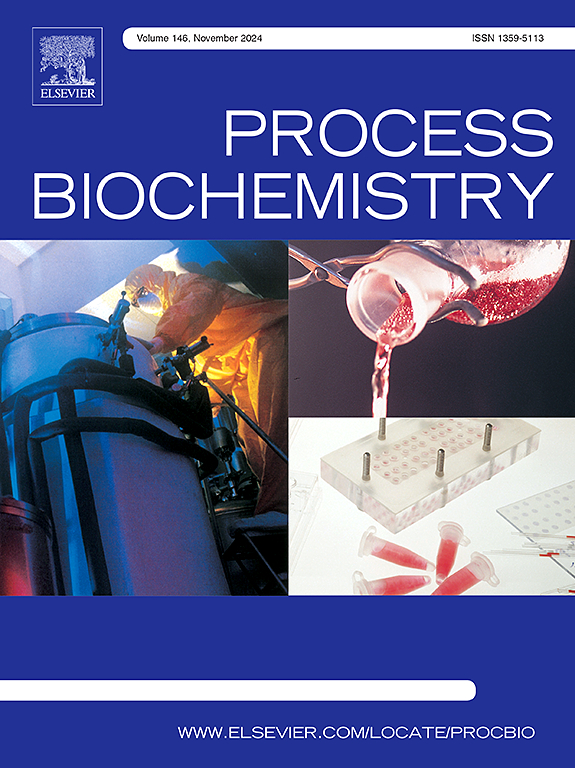海源链霉菌EMB26的主要代谢产物及广谱抗菌活性的生化基础
IF 4
3区 生物学
Q2 BIOCHEMISTRY & MOLECULAR BIOLOGY
引用次数: 0
摘要
随着抗菌素耐药性变得越来越普遍,对对抗耐药细菌的新抗生素的需求也在增长。海洋放线菌产生具有独特化学结构的新型生物活性化合物,可以对抗病原体。本研究研究了从印度马哈拉施特拉邦沿海分离的Streptomyces sp. EMB26对耐多药耐药细菌(尤其是MRSA)的杀菌活性。如FESEM图像所示,粗提物强烈抑制MRSA生长,MIC为~ 2.5 mg/mL,并导致细菌细胞解体。MRSA细胞的荧光显微镜和细胞含量渗漏试验证实了Streptomyces sp. EMB26对MRSA的杀菌活性。GC-MS分析和分子对接研究表明,化合物7,9-二叔丁基-1-oxaspiro(4,5)deca-6,9-二烯-2,8-二酮的生物活性是主要的。该化合物与参与MRSA肽聚糖细胞壁生物合成的靶蛋白Fem A、MurB、MurE和PBP2a结合时显示出最高的结合亲和力。这些结果表明,链霉菌sp. EMB26是一种很有前途的海洋放线菌,可用于开发耐多药耐药药物。本文章由计算机程序翻译,如有差异,请以英文原文为准。
Major metabolites and biochemical basis of broad-spectrum antibacterial activity in marine-derived Streptomyces sp. EMB26
As antimicrobial resistance becomes more prevalent, the need for new antibiotics against drug-resistant bacteria grows. Marine actinobacteria produce novel bioactive compounds with unique chemical structures that combat pathogens. This study investigated Streptomyces sp. EMB26, isolated from coastal Maharashtra, India, for its bactericidal activities against MDR bacteria, particularly MRSA. The crude extract strongly inhibited MRSA growth with an MIC of ∼2.5 mg/mL and caused bacterial cell disintegration, as seen in FESEM images. Fluorescent microscopy and cellular content leakage assays on MRSA cells confirmed Streptomyces sp. EMB26's bactericidal activity against MRSA. GC-MS profiling and molecular docking studies revealed that compound 7,9-Di-tert-butyl-1-oxaspiro(4,5)deca-6,9-diene-2,8-dione is primarily responsible for the bioactivity. The compound showed the highest binding affinity when docked against target proteins Fem A, MurB, MurE, and PBP2a, which are involved in MRSA's peptidoglycan cell wall biosynthesis. The findings suggest that Streptomyces sp. EMB26 is a promising marine actinomycete for developing an inhibitory drug against MDR bacteria.
求助全文
通过发布文献求助,成功后即可免费获取论文全文。
去求助
来源期刊

Process Biochemistry
生物-工程:化工
CiteScore
8.30
自引率
4.50%
发文量
374
审稿时长
53 days
期刊介绍:
Process Biochemistry is an application-orientated research journal devoted to reporting advances with originality and novelty, in the science and technology of the processes involving bioactive molecules and living organisms. These processes concern the production of useful metabolites or materials, or the removal of toxic compounds using tools and methods of current biology and engineering. Its main areas of interest include novel bioprocesses and enabling technologies (such as nanobiotechnology, tissue engineering, directed evolution, metabolic engineering, systems biology, and synthetic biology) applicable in food (nutraceutical), healthcare (medical, pharmaceutical, cosmetic), energy (biofuels), environmental, and biorefinery industries and their underlying biological and engineering principles.
 求助内容:
求助内容: 应助结果提醒方式:
应助结果提醒方式:


